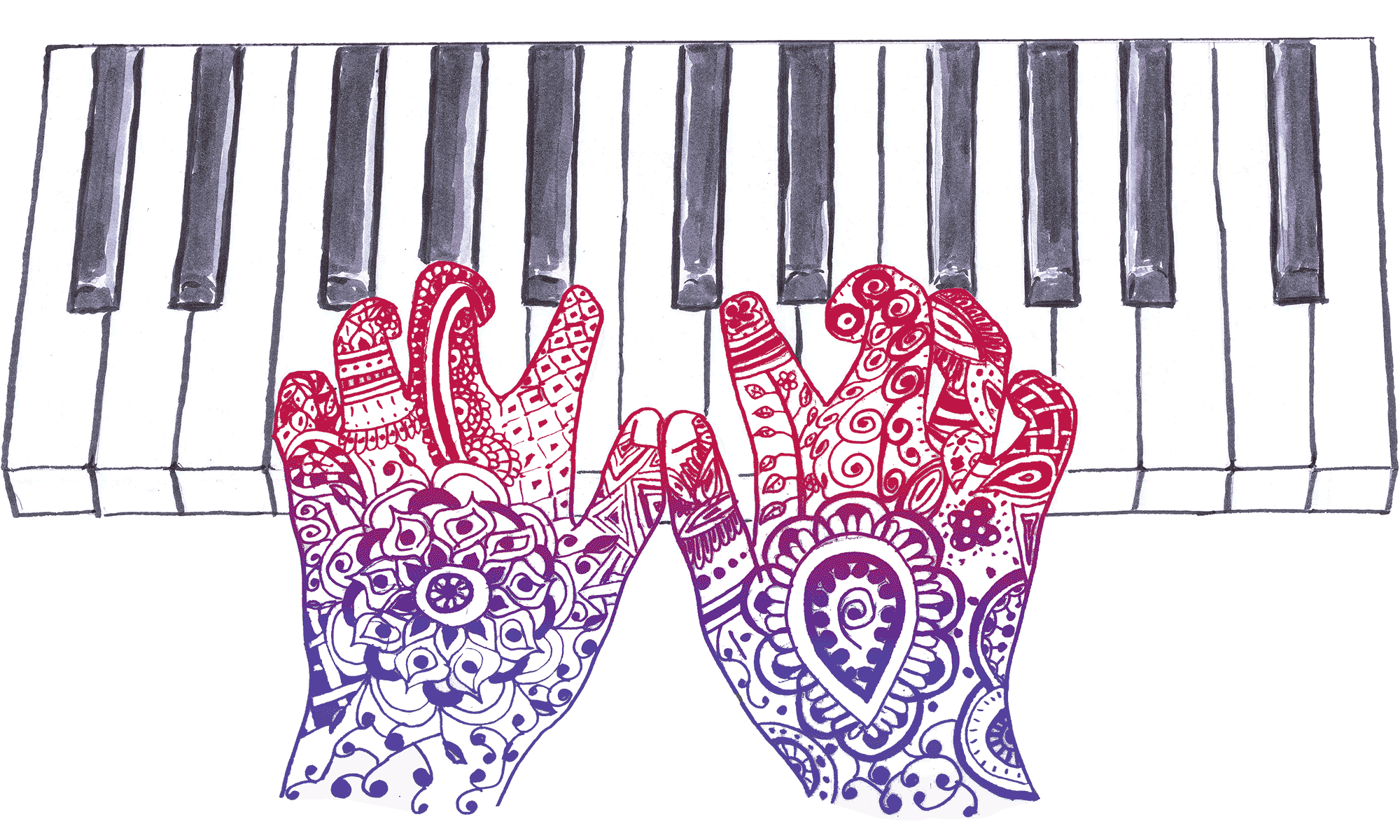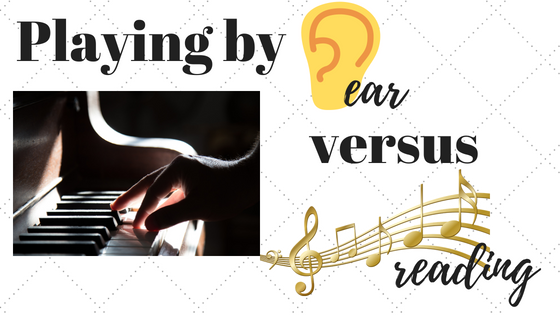This one of the most common debates I see amongst musicians, teachers and hobbyists and one of the most common questions I get as a teacher. The question I get is usually, “Which is better?” I’ve noticed, however, that usually the asker is looking for confirmation of their already held position. There is a lot going on in this seemingly simple question and I want to honestly go over what I see lying under the surface that causes people to have such passionate positions on both sides and knee-jerk responses to the opposite viewpoint. I DO have an opinion on it and I think it may be worth hearing my story to understand how I came to the position I hold but first let’s address some of the things that are unsaid under the surface.
Playing by Ear: People who can play by ear are born with some innate musical talent that others don’t have. This really gets to the heart of why people get so hung up on this. People like feeling like they were born with a magical gift that makes them special. I’m not going to lie, there is something a little magical about it in the same way that some people have a natural ability to draw. I also think that it just looks easier. This skill can be taught but even those that can naturally play by ear need to develop their ability or it will be limited. The cases that don’t require development are the ones that people get misled into thinking are possible without there being a cost.
Everyone has heard stories of autistic people that have a lot of difficulty functioning and interacting with other people but can play an entire symphony just by hearing it once. Both of those things are actually related to filtering; in one instance it manifests itself as a deficit, in the other as an amazing gift.
The executive functioning part of the brain is responsible for handling the sensory information that comes in, helping to store it, access it later and string it together in the present or during remembering to create a seamless perception. One of it’s most important functions is to manage what we pay attention to. This is designed to draw our attention to dangers that we need to react to for survival and allow attention to be focused so tasks can be completed. Autistic individuals have difficulty with this filtering. Their brain tries to focus on everything at once causing the them to get overwhelmed, especially in over-stimulating environments. It’s also why some autistic people may be able to notice every part of the orchestra at once.
For the rest of us, our executive function automatically filters incoming stimuli to make us pay attention to one thing at a time in the orchestra. In general, the thing that draws our attention the easiest, is whatever part is loudest. Conductors and Audio Engineer/Producers and highly nuanced Performers know this and use loudness to highlight musical parts and ideas drawing the listener’s ears and attention throughout the piece. Extreme expressions in individual traits affect both the upsides and downsides which is why average trait expressions create better balance.
One of the upsides to playing by ear is that it allows you to hear something and replicate it if you don’t have the music. This is great when you need a specific instrument part that may be hard to find the music for. A lot of songs on the radio may put out sheet music that’s arranged to fit a lot of different needs but won’t have the actual instrumental parts written out.
The limitations are that players often can’t figure out things that outside of their experience playing. Part of playing by ear is an internal recognition of an idea that has been experienced before. Another downside is that players will often need to listen before being able to play. Many audition, studio and performance opportunities require the ability to be able to pick up and play music on the spot due to practical cost issues. It is expensive to rent space and pay the professionals involved. Players may be able to jump in improvise if they’re playing with others but if a part is specific or solo it will require listening before playing.
Playing by Reading: People who don’t read music are being lazy and not disciplined enough to learn to be musically literate or go through a proper music education.
It’s a long-time tradition that those who have done the hard thing get prickly and defensive when others try to skip steps and don’t have to go through the trials they went through. Learning to read music fluently is not an overnight process. It takes a lot of time and effort and anyone who’s come out the other side definitely deserves respect for perseverance. Piano music in particular has many notes and ideas happening at once which makes reading difficult especially as music gets more complicated. Discipline and commitment are worthy traits to develop. People can only get so far by just relying on their talents alone and must work hard in order to reach excellence.
Reading music is a practical skill that allows you to read new music you’ve never seen or heard before and jog the memory of old pieces. It allows musical ideas to be written down and transmitted easily to others. One of the dangers of ONLY learning to read and not working on ear skills is that players often don’t learn to improvise. They get used to having everything mapped out for them. Learning to make choices on the spot is a skill that must be practiced. The other downside to having music all written out is that it is harder to see song form and harmony. The player can get lost in the linear way the details are laid out and fail to see the big picture. Having an understanding of how music works adds to a player’s ability to interpret the music.
Both Playing by Ear and Playing by Reading are valuable ways to experience and understand music. Most people tend to have more aptitude towards one or the other so the opposite approach feels more difficult but it’s worth working on both for the advantages that each give. The two skills are compatible and both part of being a well-rounded musician.
I had a natural ear and when I began taking piano lessons. My teacher didn’t notice that I wasn’t actually reading the music. She would play the song I was going to learn for the week so I knew what it sounded like. Because my ear and my memory were good, I wasn’t actually getting any reading practice of notes. My playing and my ear grew more over time but my reading skills were nonexistent. When I got a more advanced teacher, she didn’t notice that I wasn’t reading either. When I got to music college, it started to become a problem. I could understand concepts and play very difficult things, but my lack of reading skills really slowed down how fast I could learn things, write out music or sometimes follow discussions. It was more difficult to tackle reading skills at this point but it definitely opened up new capabilities that I wish I had earlier. I discovered I do best at reading when I can translate what I see on the page into something I recognize and know by sound. As I got good at reading music I started to understand how playing by ear and reading are linked. In order to play by ear, you translate something you hear into a visual shape on the piano. In order to play by reading, you translate the visual shape you see on the page (which is the same shape on the piano) to a sound you hear. It’s pretty silly to think the translation is somehow better in one direction versus the other. They both output to the sound you hear in the end.

